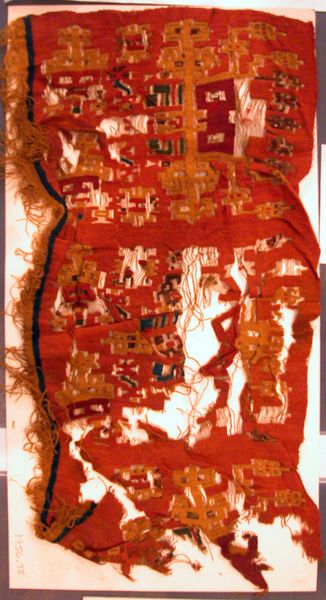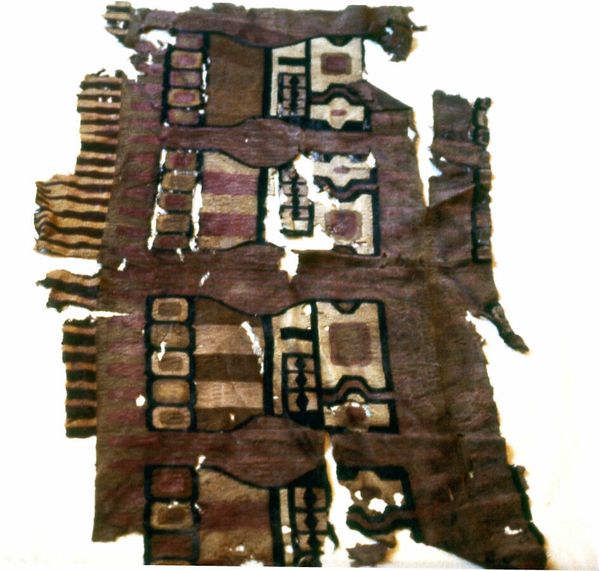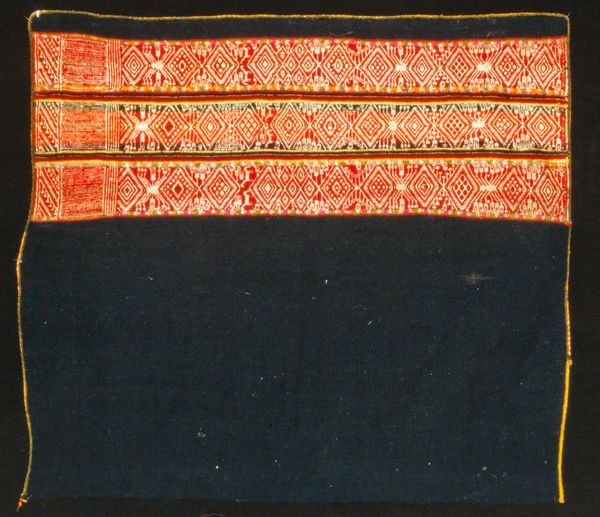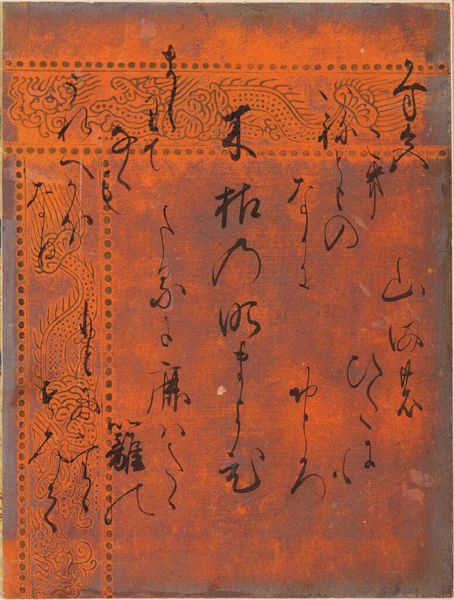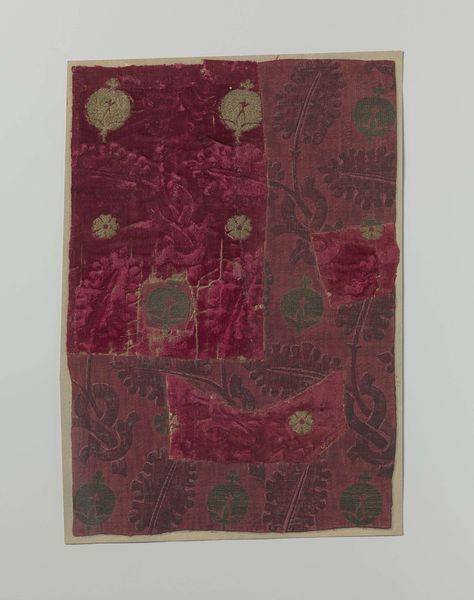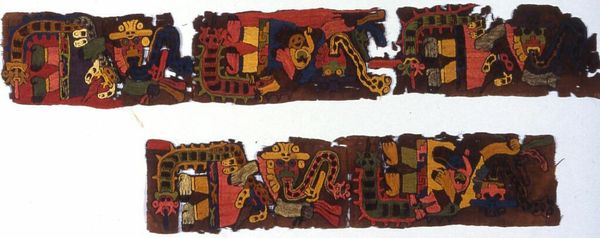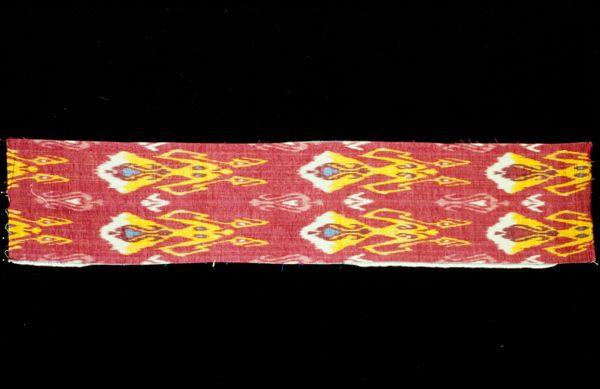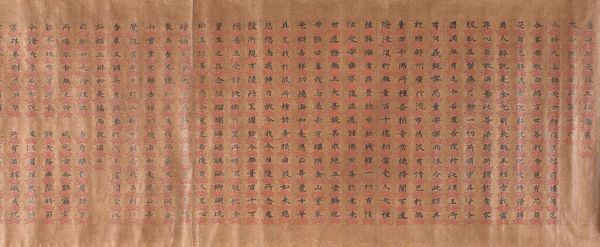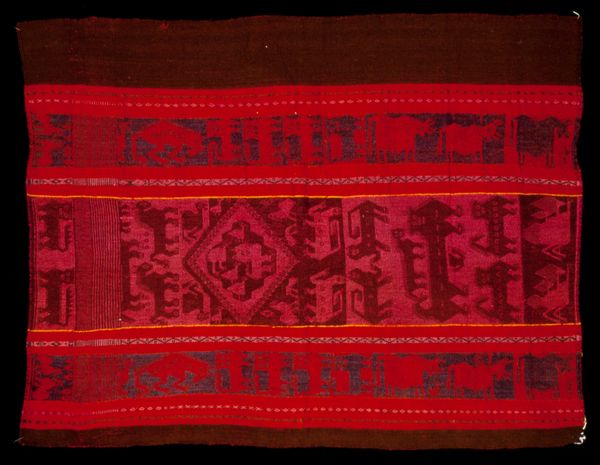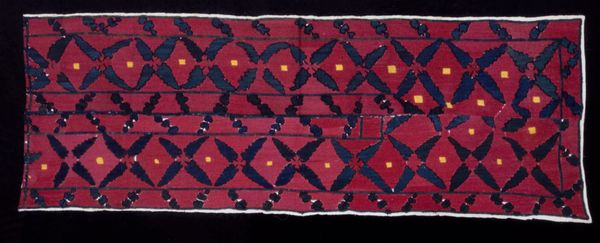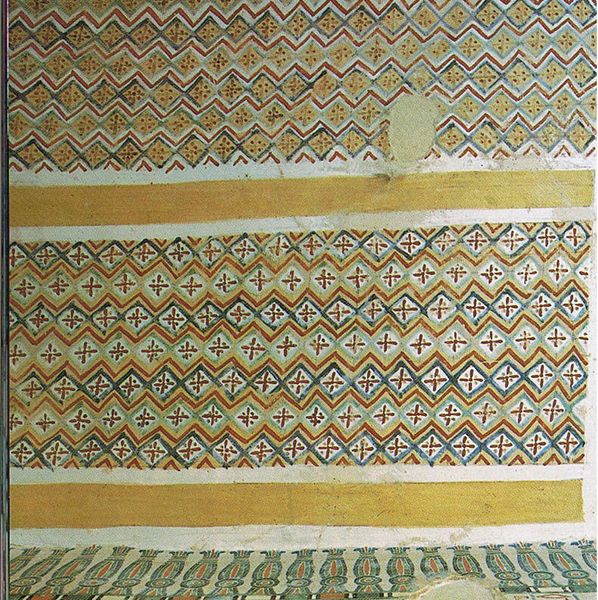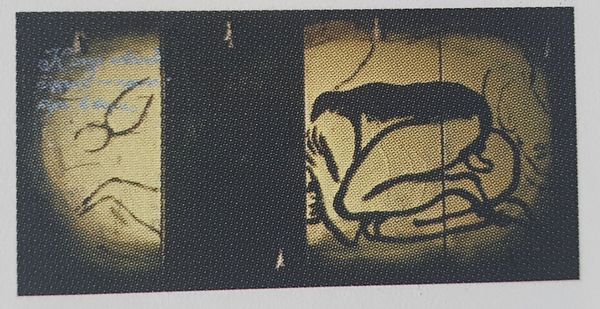
fibre-art, weaving, textile
#
fibre-art
#
weaving
#
textile
#
figuration
#
geometric
#
mixed media
#
indigenous-americas
Dimensions: 210.8 × 122.9 cm (83 × 48 3/8 in.)
Copyright: Public Domain
Curator: Standing before us is the "Unfinished Mantle," a fascinating piece of Paracas textile art dating back to approximately 100-200 AD. Woven from wool, it currently resides here at The Art Institute of Chicago. Editor: My initial thought is how graphic it is. Even with the damage, there’s a strong visual language at play, those repetitive motifs on the dark background really grab your attention. Curator: Indeed. The imagery offers insight into the Paracas culture's symbolic universe. While "unfinished," as the title suggests, the piece provides invaluable context. This isn’t merely decoration; it's potentially a narrative or a sacred depiction. Editor: It feels almost like code – each geometric figure, each repetition a possible word or idea in a long-lost visual language. What do you make of its original use? These weren’t exactly tapestries hanging in someone’s parlor. Curator: The Paracas people, flourishing along the coast of modern-day Peru, were renowned for their elaborate textiles. These mantles, like this piece, often served as burial shrouds, indicating status, lineage, and beliefs about the afterlife. The act of weaving itself would have been sacred, with each pattern imbued with deep cultural significance. Editor: It's quite moving, imagining this was meant to accompany someone into the next life. Makes you wonder about the artist, too, weaving under specific conditions or within tight-knit social roles and spiritual beliefs that gave significance to their act. Curator: Absolutely. We must also consider that the unfinished nature of the piece prompts questions: Why was it left incomplete? Did it reflect sudden change or interruption in societal conditions or workshop practice? Or does it represent that completion only comes after death? Editor: So true. The piece really does open this discussion on our incomplete perceptions about past civilizations. And there’s something deeply human about encountering something unfinished— it resonates with our own ephemeral existence and struggles for purpose. Curator: It reminds us that material objects have profound historical context and enduring power. And while interpretations may change with new socio-cultural or institutional practices, this mantle offers a bridge across time, a testament to human artistry and the impulse to give meaning to our lives and deaths. Editor: Right. Seeing an artwork like this transforms our sense of history – and our own place within it, too.
Comments
No comments
Be the first to comment and join the conversation on the ultimate creative platform.
